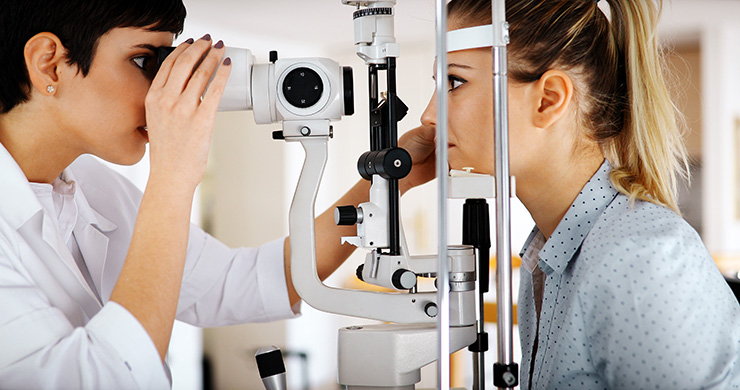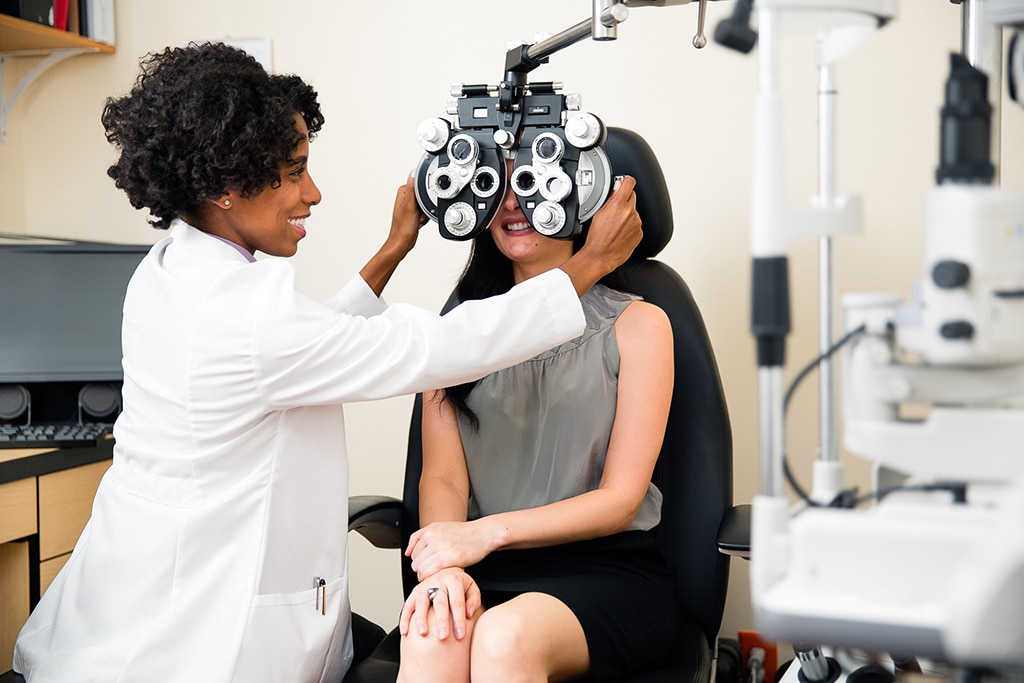Discover the Best Optometrist Chino for Comprehensive Eye Care
Discover the Best Optometrist Chino for Comprehensive Eye Care
Blog Article
Discovering the most up to date Technical Advancements in Optometry and What They Mean for Eye Doctors
From the accuracy of Optical Coherence Tomography to the nuanced insights offered by AI-driven diagnostic devices, these advancements are setting brand-new standards in patient evaluation and treatment. As these advancements penetrate the practice, optometrists are encountered with the obstacle of embracing these devices to enhance client end results.
Technologies in Diagnostic Devices
Progressing the field of optometry, innovations in diagnostic devices have actually revolutionized the method eye treatment professionals examine and detect aesthetic disabilities and ocular conditions. The past years has seen significant technological advancements, allowing even more accurate and extensive examinations.
One more key innovation is the intro of innovative corneal topography systems, which map the surface area curvature of the cornea with precision. These tools are particularly helpful for fitting contact lenses and detecting corneal disorders. Electronic retinal imaging has actually changed traditional ophthalmoscopy, using detailed, scenic sights of the retina that promote thorough visual examinations.
The growth of wavefront aberrometry has actually also been important, enabling the analysis of refractive errors with unequaled precision (Optometrist Chino). This technology helps in personalizing rehabilitative lenses and boosting medical outcomes for refractive surgical treatments. Collectively, these diagnostic innovations empower eye doctors to provide exceptional client treatment, ensuring early treatment and tailored treatment strategies, inevitably improving visual health and wellness end results
AI in Patient Management
Building on the structure of sophisticated diagnostic devices, the consolidation of man-made intelligence (AI) in client monitoring stands for a transformative jump for optometry. AI systems are significantly used to enhance effectiveness, accuracy, and personalization in person treatment. By evaluating large quantities of information, AI can identify patterns and predict prospective eye conditions, allowing optometrists to customize interventions better. This capacity is crucial in taking care of persistent eye diseases such as glaucoma and diabetic retinopathy, where early detection and continual surveillance are crucial.
Furthermore, AI-driven systems help with structured patient interactions and administrative procedures. Automated organizing, digital appointments, and personalized follow-up strategies not just enhance client satisfaction but likewise optimize time administration for experts. These systems can triage clients based upon the urgency of their problems, guaranteeing that those in critical requirement get punctual attention.
Moreover, AI boosts decision-making by providing optometrists with evidence-based suggestions and therapy pathways. By integrating information from digital health and wellness records, AI tools supply understandings that notify scientific choices, lowering the danger of mistakes and enhancing patient end results. As AI continues to develop, its duty in person management will likely increase, reshaping the landscape of optometric care.
Advancements in Retinal Imaging
In the world of optometry, retinal imaging has actually experienced exceptional technical advancements that are improving analysis capacities and patient treatment. Technologies such as Optical Comprehensibility Tomography (OCT) and fundus photography have actually revolutionized just how optometrists envision and evaluate the retina. OCT, specifically, offers high-resolution, cross-sectional pictures of the retina, enabling for the thorough assessment of its layers. This ability is important for very early detection and administration of conditions like glaucoma, diabetic check it out retinopathy, and age-related macular deterioration.
Enhanced imaging methods like OCT angiography are more refining diagnostic accuracy. Opticore Optometry. Such developments facilitate the recognition of minute retinal changes that can represent illness development.
Moreover, developments in expert system are boosting retinal imaging by allowing automated evaluation of big datasets. These systems help optometrists in identifying patterns a sign of pathology, consequently improving analysis accuracy and efficiency. Jointly, these innovations are transforming retinal imaging into a keystone of contemporary eye treatment, boosting outcomes and expanding healing opportunities.
Teleoptometry's Growing Function
Teleoptometry is increasingly becoming a crucial element of eye care, driven by advancements in data and analysis tools. As optometry welcomes digital makeover, teleoptometry facilitates remote appointments, permitting eye doctors to extend their solutions beyond conventional limits. This is particularly useful in rural and underserved locations where access to specialized eye treatment is typically restricted. By leveraging high-resolution video clip conferencing and advanced retinal imaging, optometrists can carry out comprehensive eye tests from afar, ensuring prompt diagnosis and treatment.
The integration of fabricated knowledge (AI) further boosts teleoptometry, allowing the analysis of visual data and aiding in the discovery of ocular problems such as glaucoma and diabetic person retinopathy. AI-powered formulas can rapidly translate intricate imaging information, supplying optometrists with important understandings that reinforce professional decision-making.
Moreover, teleoptometry supports continuity of treatment through smooth combination with electronic health and wellness documents (EHRs), permitting optometrists to preserve detailed client backgrounds. When consulting with different practitioners., this makes sure that people obtain personalized and consistent treatment also.
Despite these benefits, challenges stay, consisting of making sure data protection and taking care of person expectations. Nevertheless, teleoptometry stands for a considerable stride towards more easily accessible, effective, and patient-centered eye care. As innovation evolves, its duty is poised to increase better.

Future Patterns in Eye Care
A myriad of cutting-edge patterns is readied to reshape the future of eye treatment, driven by technological advancements and the progressing requirements of clients. One considerable fad is the integration of man-made intelligence (AI) in diagnostics, which promises to enhance the accuracy and performance of eye examinations. AI formulas can assess vast amounts of data from retinal images, potentially finding problems like diabetic person retinopathy and glaucoma earlier than typical techniques.
Additionally, personalized medication is obtaining grip in optometry, with genetic testing educating customized therapy strategies. This strategy aims to maximize client end results by tailoring treatments to individual hereditary accounts. Wearable modern technology, such as sites clever get in touch with lenses, is likewise coming up, providing real-time monitoring of intraocular stress or sugar degrees, therefore giving continuous understandings right into ocular and systemic health.
The adoption of increased truth (AR) and digital fact (VIRTUAL REALITY) in training and individual education and learning is another emerging trend. These innovations provide immersive experiences that can boost understanding and skills both for eye doctors and people. As these trends evolve, eye doctors should remain abreast of technological innovations to supply advanced treatment, ensuring improved individual outcomes and satisfaction in the dynamic landscape of eye treatment.
Conclusion

Jointly, these diagnostic innovations equip optometrists to deliver premium individual care, ensuring early treatment and tailored therapy strategies, ultimately boosting aesthetic health and wellness outcomes.

As these innovations proceed to evolve, optometrists must adjust and integrate them right into practice, eventually maximizing workflow effectiveness and boosting the criterion of eye care provided to people.
Report this page